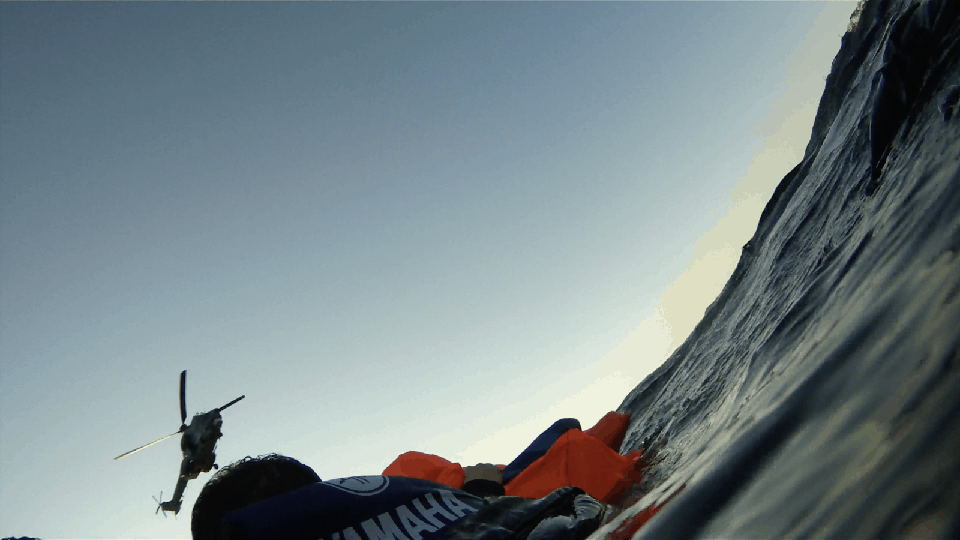Shipwreck study shows fatal impact of EU rescue policy
Primary page content
New research by Forensic Architecture exposes how EU states’ failure to take responsibility for migrant boat rescue operations has resulted in significant loss of life.

A helicopter hovers above the site of the shipwreck (Amel Alzakout) © FORENSIC ARCHITECTURE, 2020
The research unit, based at Goldsmiths, University of London, has produced a new investigation analysing unique video footage of a 2015 incident north of Lesvos, Greece.
Media headlines at the time focused on the Greek coastguard’s rescue of 242 people onboard a capsized boat. Yet with 43 people dead, the Lesvos event was also the deadliest single incident in Europe’s ‘long summer of migration’.
Forensic Architecture’s investigation into the Lesvos operation was published today (20 February 2020) as part of the Berlinale 2020, and is now on show at Forum Expanded, Berlin, Germany.
On 28 October 2015, a migrant boat left Turkey for the nearest European coast – the Greek island of Lesvos. The boat was old and overcrowded and capsized within Greek territorial waters, meaning that rescue operations were the responsibility of EU agencies.
During a year in which more than a million people attempted to reach Europe by sea and almost 4,000 lost their lives in the Mediterranean, the EU’s long-term policy of policing and repelling migrants left EU agencies and local coastguards under-equipped for rescue.
By analysing unique footage of the Lesvos incident from a waterproof camera attached to the wrist of survivor Amel Alzakout, an artist and filmmaker, FA’s investigation shows how the long-term militarisation of Europe’s borders impeded rescue efforts.
In collaboration with Alzakout, FA reconstructed the migrant ship’s journey, the shipwreck, and the rescue operation that followed.
Cross-referencing Alzakout’s footage with videos from activists and press photographers, thermal camera footage (captured by the artist Richard Mosse), and weather data, FA examined how the event unfolded and interactions of those involved – smugglers, migrants, rescuers, coastguard, Frontex agents, activists, fishermen and NGOs.
The case revealed the crucial role of civil society actors such as the NGO Proactiva, and private fishing vessels, in the rescue. Since the incident, the NGOs responsible for saving thousands of lives in the Mediterranean have been obstructed and criminalised by EU states, as part of the EU policies of closing borders.
The investigation was led by Professor Eyal Weizman, with Christina Varvia and Stefanos Levidis.
Forensic Architecture's report concludes: “In March 2016, four-and-a-half months after the shipwreck, the EU-Turkey deal came into effect. Since then, Aegean waters have been further militarised, with dramatic increases in surveillance and interceptions. EU agencies continue to treat those attempting to reach European shores as intruders, rather than as civilians seeking safe haven.”
FA’s Berlinale exhibition Shipwreck at the Threshold of Europe, Lesvos, Aegean Sea: 28 October 2015 and Amel Alzakout’s film Purple Sea, a collaboration with filmmaker Khaled Abdulwahed, are on show from 20 February – 1 March 2020. The full FA report is available online now
The first major US review of Forensic Architecture’s work uncovering evidence of state and corporate violence around the world opened this week at the Museum of Art and Design at Miami Dade College. Forensic Architecture: True to Scale is open from 20 February – 27 September 2020.
Forensic Architecture is based in the Department of Visual Cultures at Goldsmiths.